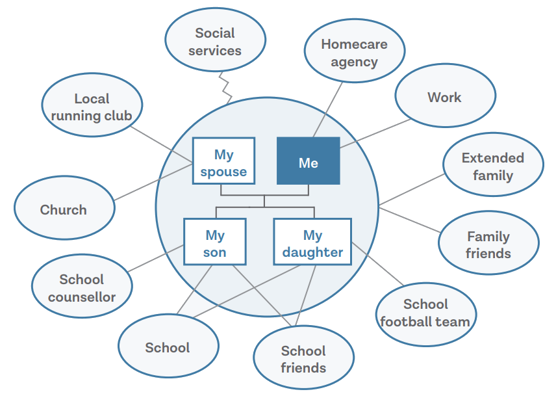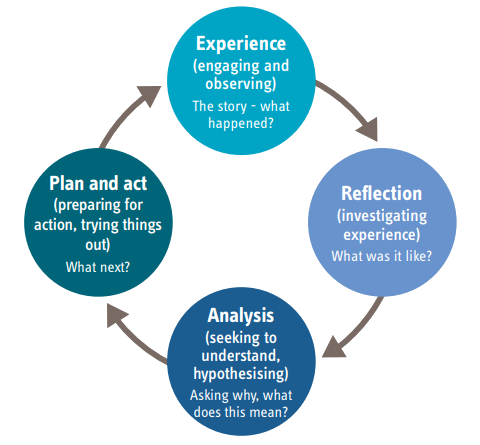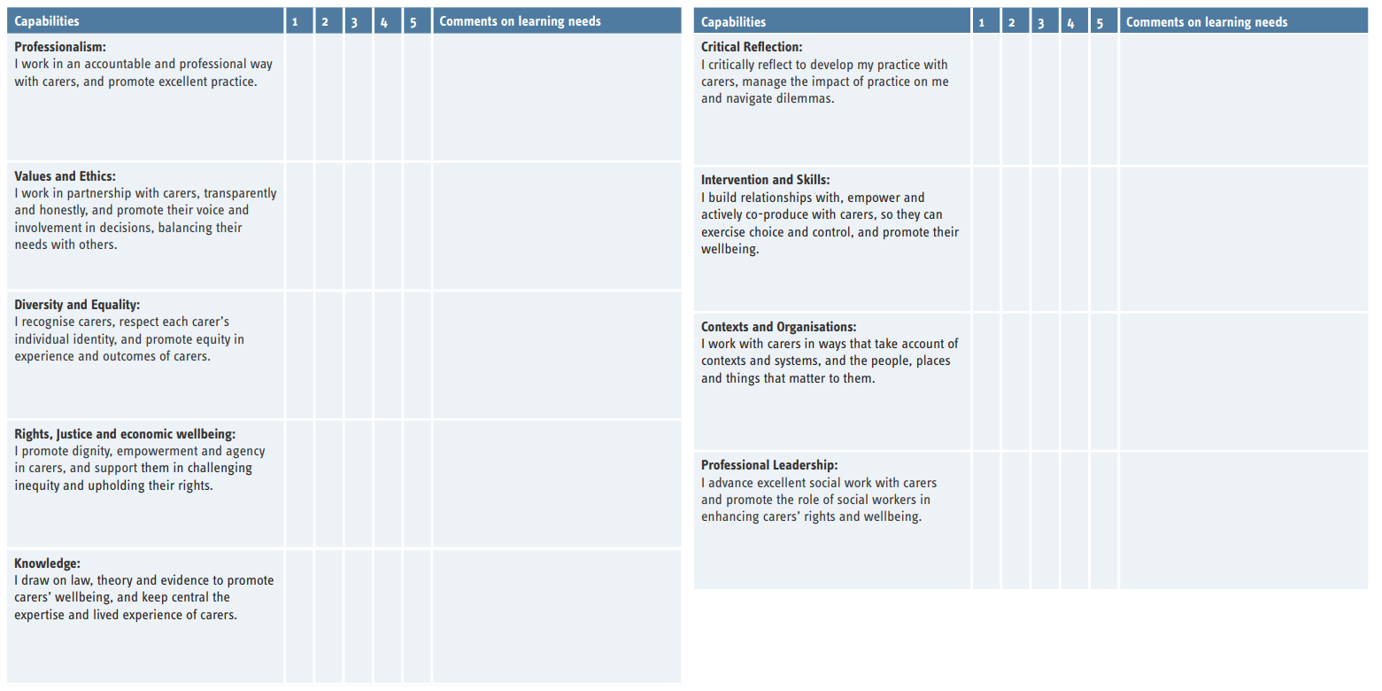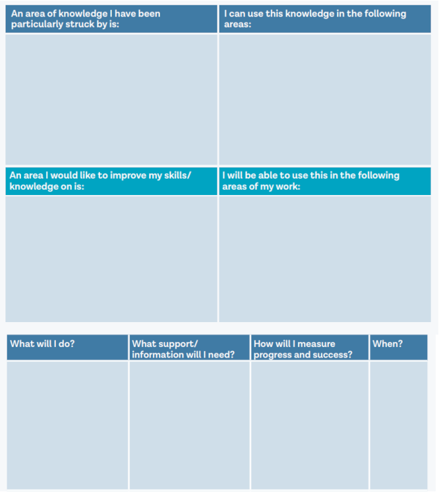Tools for social work with carers
These tools can be used to support practice with carers.
Ecogram
Download the Blank Ecogram (PDF)
This depicts the important relationships, resources and systems in a person’s life, not simply those connected with their family.
Start by writing the person’s name at the centre of a piece of paper. If you are considering them as a family or household, you might want to draw a miniature family tree in the central circle, but make sure each person’s name is given in a separate circle.
Now ask the people in the household about outside systems that may affect or support them.
For example, this might include extended family, friends, workplaces, religious organisations, social services, other welfare agencies, medical professionals, and so on. Draw these systems in circles outside of the family circle.

Now connect these other circles either to the family circle as a whole (if they affect/support everybody) or to a particular member of the household.
You can use different connectors for different types of relationships. For example, a zig-zagging line is often used to depict a relationship where there is conflict, a dashed line to depict a tenuous relationship strong lines or multiple lines to depict strong connections, and so on. You can use a short line cutting across these connectors to show that a connection has been cut off.
Reflective cycle

Download the Reflective Cycle (PDF)
Supervision can support good decision-making through enabling critical reflection. This includes:
-
Critical thinking: Identifying how we know what we know.
-
Analysis: Breaking something down into parts.
-
Reflection: Looking back at what has happened and looking forward to what will happen.
-
Reflexivity: Identifying your impact on a situation.
When you are dealing with a difficult issue or case, critical reflection can help you to understand and to gain insight into what to do.
This tool provides example questions that can be asked in supervision to explore all four stages of Kolb’s (1984) reflective cycle to solve a dilemma.
You can use this tool in individual or group supervision to talk through a situation and identify insights that feed into action planning. It is particularly helpful in complex cases. However, the reflective cycle can be used for any discussion or decision. This is also a useful tool for development as it helps you to identify learning from your experiences.
Take five minutes answering questions about experience:
For example –
-
Who was involved?
-
What happened?
Take five minutes answering questions about reflection:
For example –
-
How did you feel?
-
What do you think others felt?
Take five minutes answering questions about analysis:
For example –
-
What were the causes of the event?
-
What can we learn from research?
Take five minutes answering questions about planning and acting:
For example –
-
What else do I need to know?
-
What should be my next step?
Clarify the actions that are needed.
One-page profile
Download the Blank One Page Profile (PDF)
What others like and admire about me, what is important to me, how best to support me.

Learning needs analysis
Download the Learning Needs Analysis (PDF)
Look at the learning areas below and reflect on how capable and confident your practice is in each area. Give yourself a score from 1 (very low) to 5 (very high) – make notes in the comments section to summarise why you have given yourself that score.

Learning and development action plan
Download the Learning and Development Action Plan (PDF)
Social care practitioners have a responsibility to continuously learn and develop so that they can work better with adults and carers. Discussions about learning can take place in supervision. Supervision is also an opportunity to review learning and how this has been transferred into practice (Pike 2012).
This tool enables individuals to plan ongoing learning and development. The tool can also be used by organisations to identify learning and actions for organisational improvement.
You can use this tool in individual or group supervision, or in discussions about supervision, to identify learning and actions that you will take. Actions should be shared with your supervisor to ensure that you gain support to undertake them.

